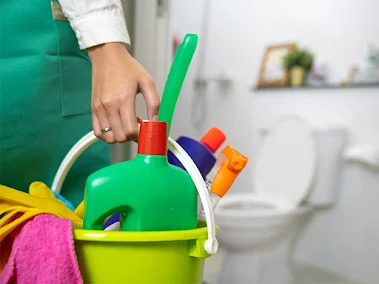4 Cleaning Products You Should Never Mix With Bleach
Chlorine bleach is a dangerous chemical. Even a short exposure can irritate mucosal tissues and burn skin. Yet, as we all know, it can be safely used in combination with laundry soap and liquid fabric softener.
4 Cleaning Products You Should Never Mix With Bleach
1. Don’t Mix Chlorine Bleach with Rubbing Alcohol
Mixing chlorine bleach (sodium hypochlorite) with rubbing (ethanol or isopropyl) alcohol makes a blend of chloroform, hydrochloric acid, and chloroacetone or dichloroacetate. These chemicals are irritating and toxic and can lead to the nervous system, lung, kidney, liver, eye, and skin damage. High levels of chloroform can bring on dizziness, nausea, unconsciousness, and possibly death.
If you mix vinegar or other mild acids with bleach, it creates vapors of toxic chloramine and chlorine gas. These can cause problems ranging from breathing problems and watery eyes to serious chemical burns to the lungs, esophageal tissue, and eyes. (Strange Effects Of Apple Cider Vinegar On Health)
3. Don’t Mix Chlorine Bleach with Ammonia
This combination produces a toxic gas called chloramine, with symptoms similar to bleach and vinegar, plus shortness of breath and chest pain. Many glass cleaners contain ammonia, so never mix those with chlorine bleach.
Mixing large amounts of ammonia with bleach could produce liquid hydrazine. Liquid hydrazine is highly toxic and potentially even explosive.
Combining hydrogen peroxide and vinegar in the same container makes a corrosive – peracetic acid. This is potentially toxic and in high concentrations can damage the skin, eyes, throat, nose, and lungs.
Basically, don’t use chlorine bleach with anything other than laundry soap. And do not combine the contents of containers of disinfectants and other cleaning products with each other. A good rule of thumb is if you wouldn’t drink it you shouldn’t mix it.
ALSO READ: How To Use Hydrogen Peroxide For Nail Fungus












